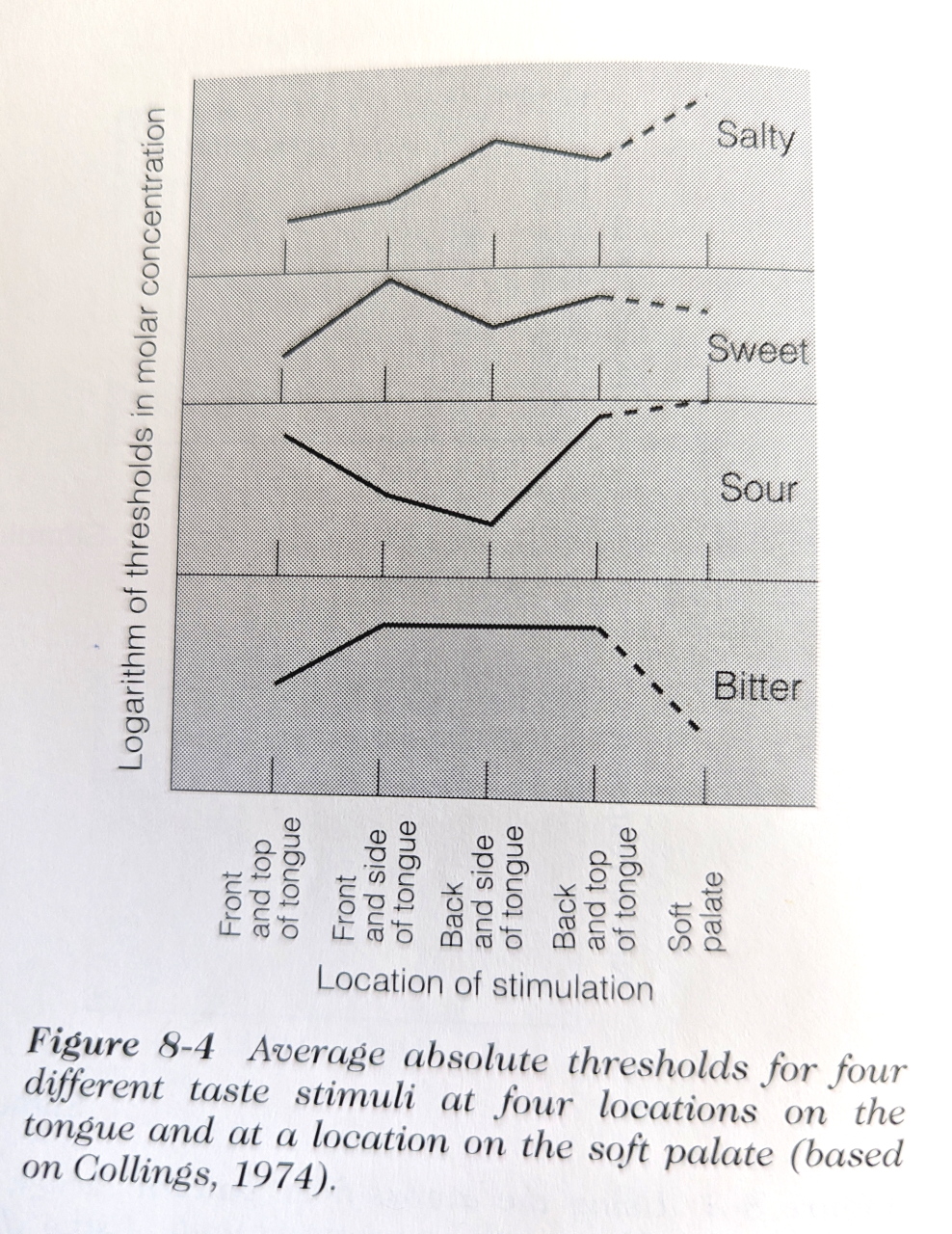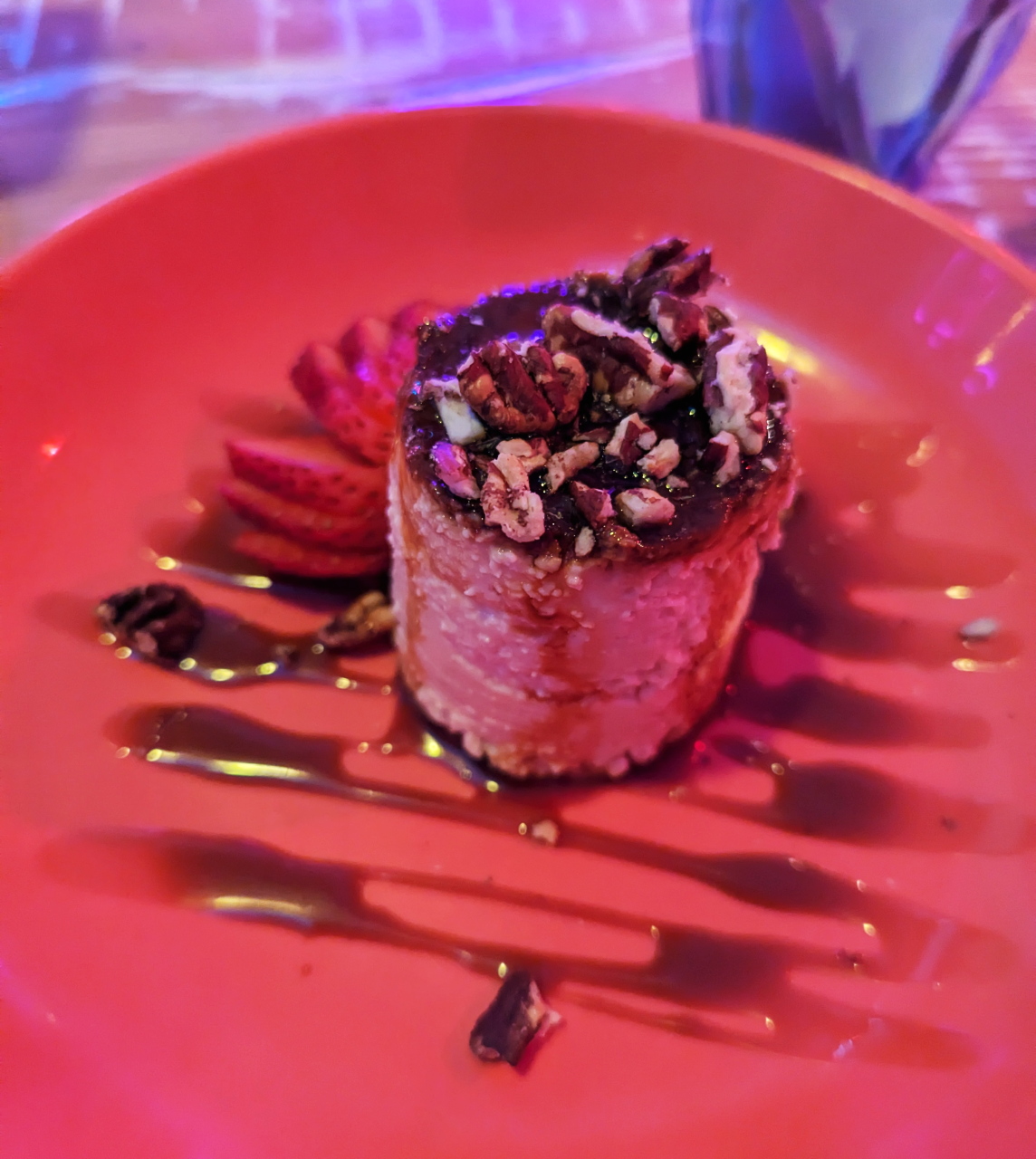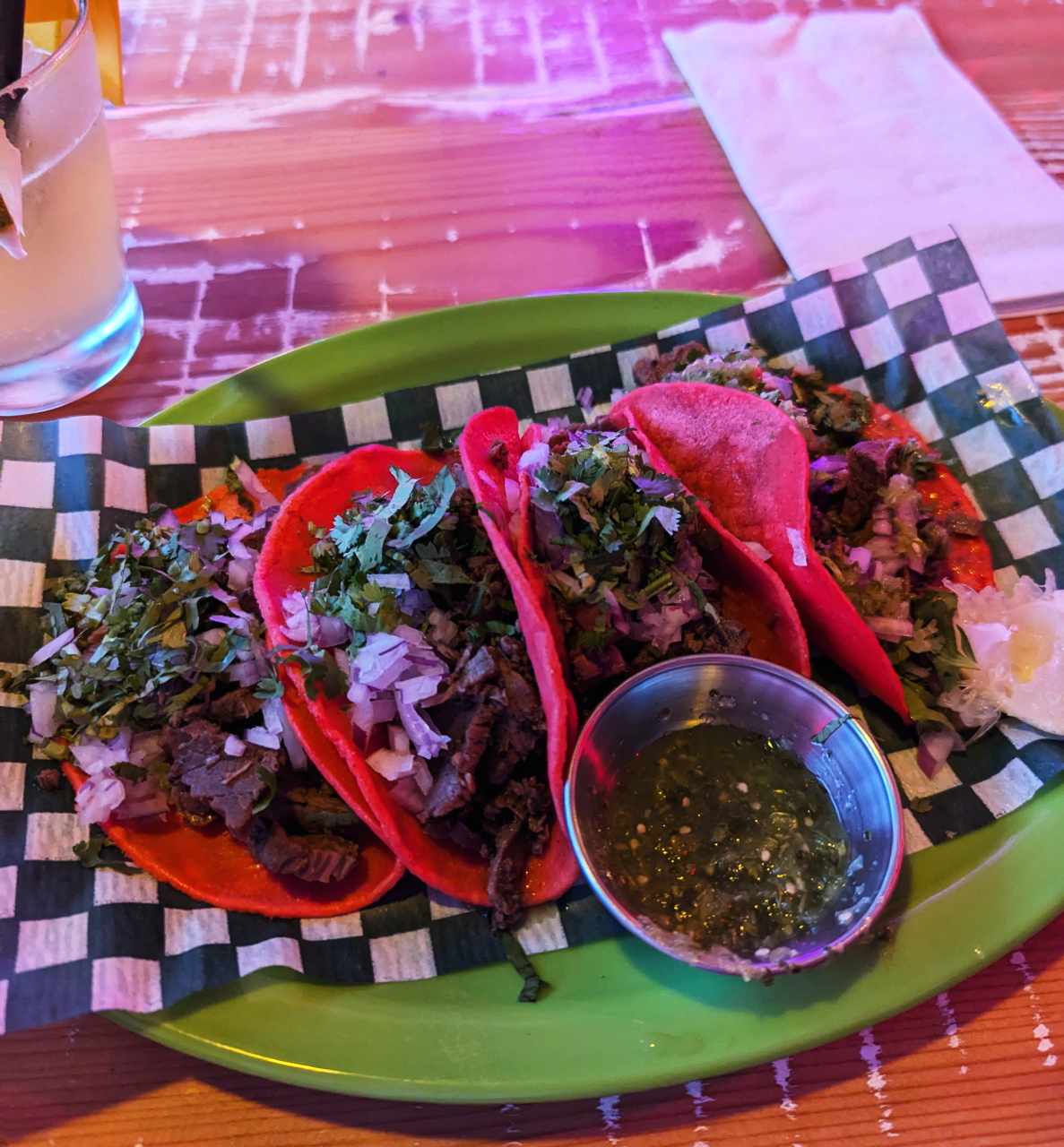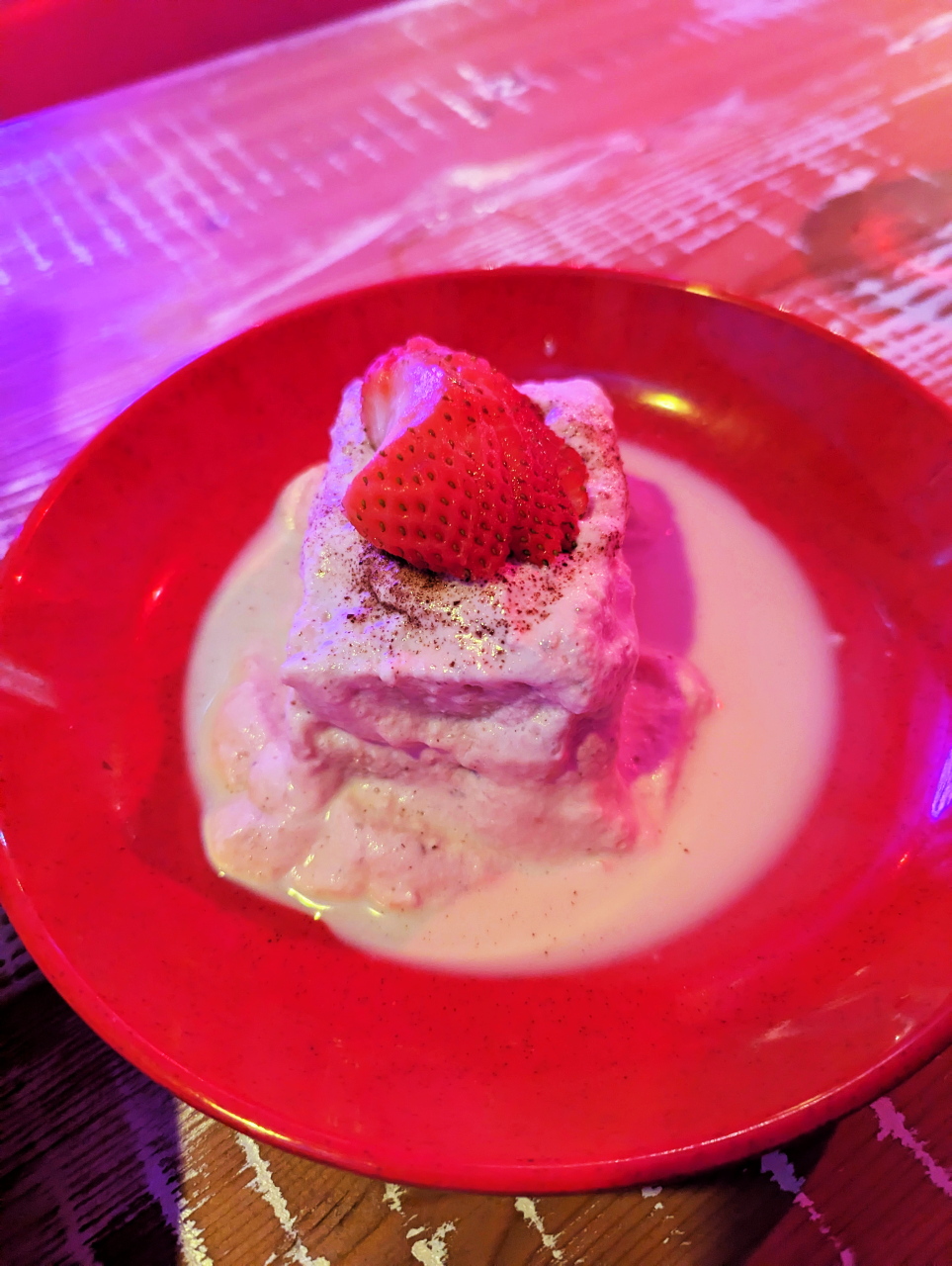Thank you for joining me in this Friday culinary adventure. Please take a seat, stick out your tongue, and let's begin.


When the molecules of a substance like food and drink touches the taste receptors on our tongues, they initiate a cascade of electrical currents that travel along this sensory organ, up the spinal cord systems, through the brainstem, along neural pathways to the thalamus, firing in all directions or suppressing signals based on the molecular quality of the stimuli, which are then received, stored, analyzed, and processed to give us the final conscious experience of taste with its range of conscious sensations (sweet, spicy, salty, bitter, and umami).
 Horchata and margarita getting it on with a Corona bottle. Warning: spicy rim
Horchata and margarita getting it on with a Corona bottle. Warning: spicy rimThe taste receptors covering our tongues are sensitive to all kind of flavours, but it has been observed that different areas are more sensitive to some tastes than others. By sensitive, it means that the receptor has a lower activation threshold in the presence of a given compound. Though it should be emphasized that all regions of the tongue work in concert to produce the conscious experience of flavour. The following diagram shows one of the earliest findings on the relationship of taste and tongue sensitivity.

The lower the bar, the more sensitive that area is to the particular taste stimuli. As cited in Coren, Ward, and Enns (1994)
The tip of the tongue is sensitive to sweet an salty flavours. Umami had yet to be included but the tip is also involved. The sides are sensitive to the sourness of the substance. The front and sides are more sensitive to salty flavours. Bitterness is at the front. And so on. The picture is more complex than what I'm presenting here in light of more recent discoveries, but this is the gist of the story.

Dulce de leche goodness

Mexican food is usually "hot" thanks to molecules such as capsaicin, piperine, and other compounds found in the ingredients. Unfortunately, or fortunately as the case may be, Mexican food in this city is not that hot. Our Pacific Northwest palate hasn't reached those levels of spicy nirvana yet. Sensitivity to hot food is located all over the tongue, and our ability to process it involves a host of different neurobiological variables that are too boring to discuss in this post, so here's a picture of tacos.

Muy delicioso!
Lawless and Stevens (1988 as cited in Coren, Ward, and Enns, 1994 ) showed that the tip of the tongue is sensitive to red and black peppers. Thankfully, our taste receptors usually adapt to hot spicy foods (usually with the aid of horchata or some other sweet compound), which is why we can keep on eating them despite the mouth-burning and tongue scraping sensations they elicit.

Tres leches
I hope you enjoyed this dive into the gustatory system. I will leave you with this tasty morsel: there are between 2000-4000 taste buds, each with 50-150 receptor cells. That's a lot of cells waiting to be activated, so make sure you give that tongue a workout this weekend 😜

Resources
- Tongue map - Wikipedia
- Taste buds- Wikipedia
- Michigan State University Taste – Foundations of Neuroscience (msu.edu)
- Coren, S., Ward, L. M., & Enns, J. T. (1994). Sensation and perception (4th ed.). Harcourt Brace College Publishers.
 |  |  |  |
|---|---|---|---|
| X | InLeo | NFT Showroom |
Posted Using InLeo Alpha